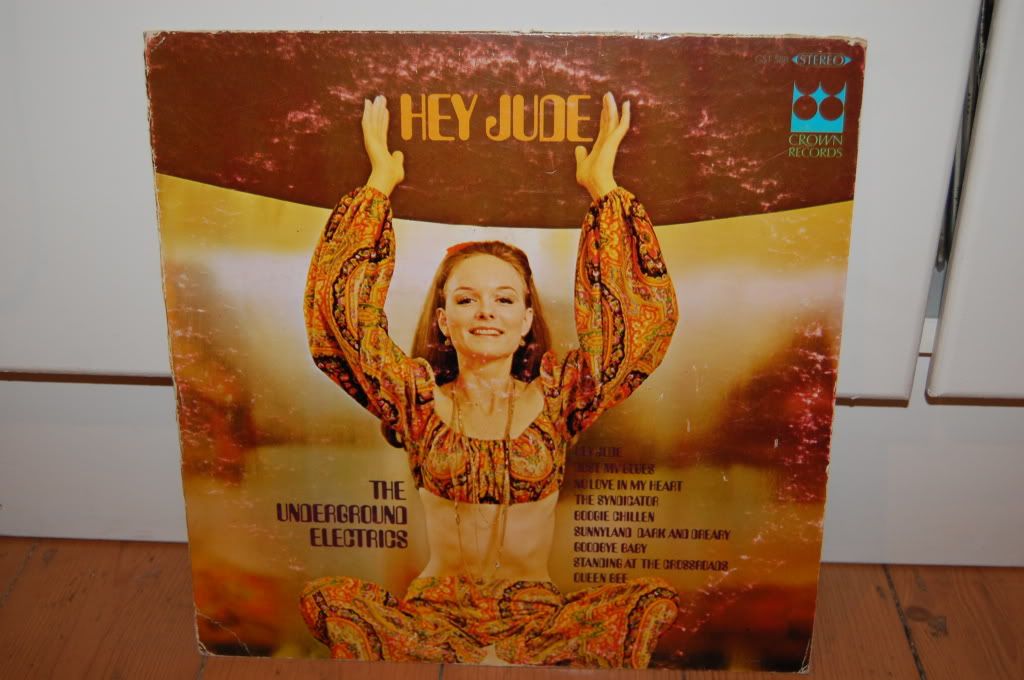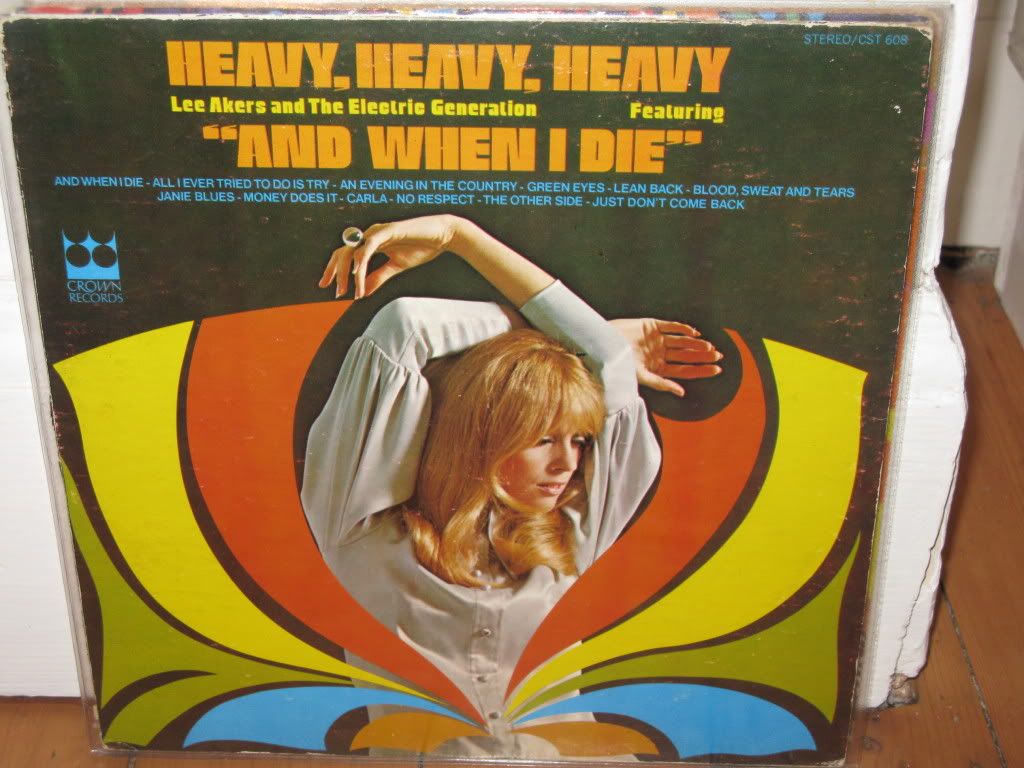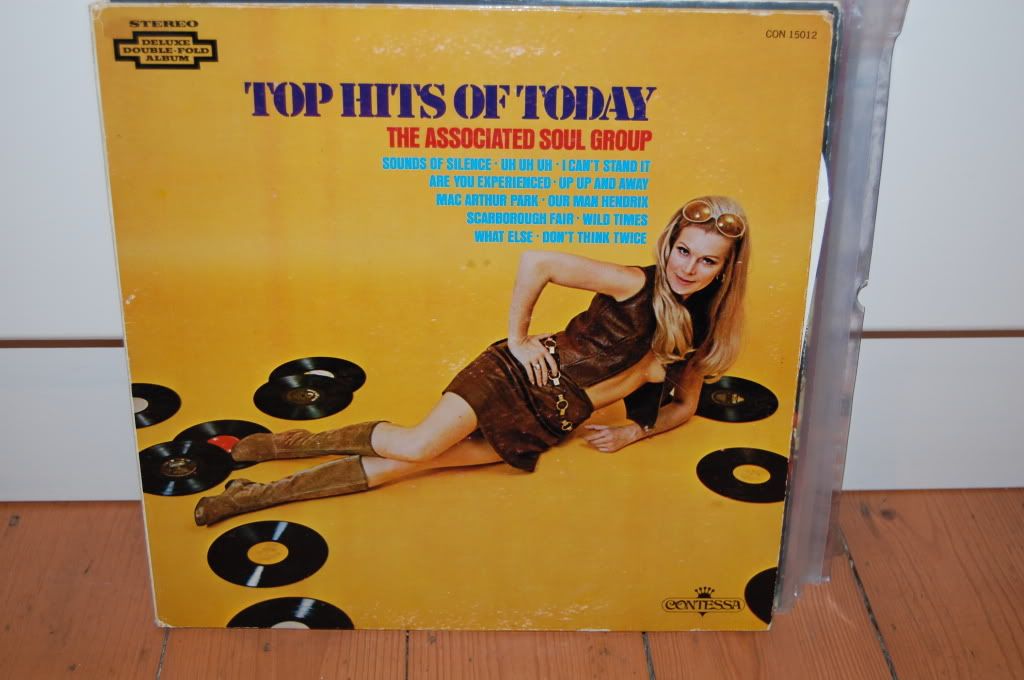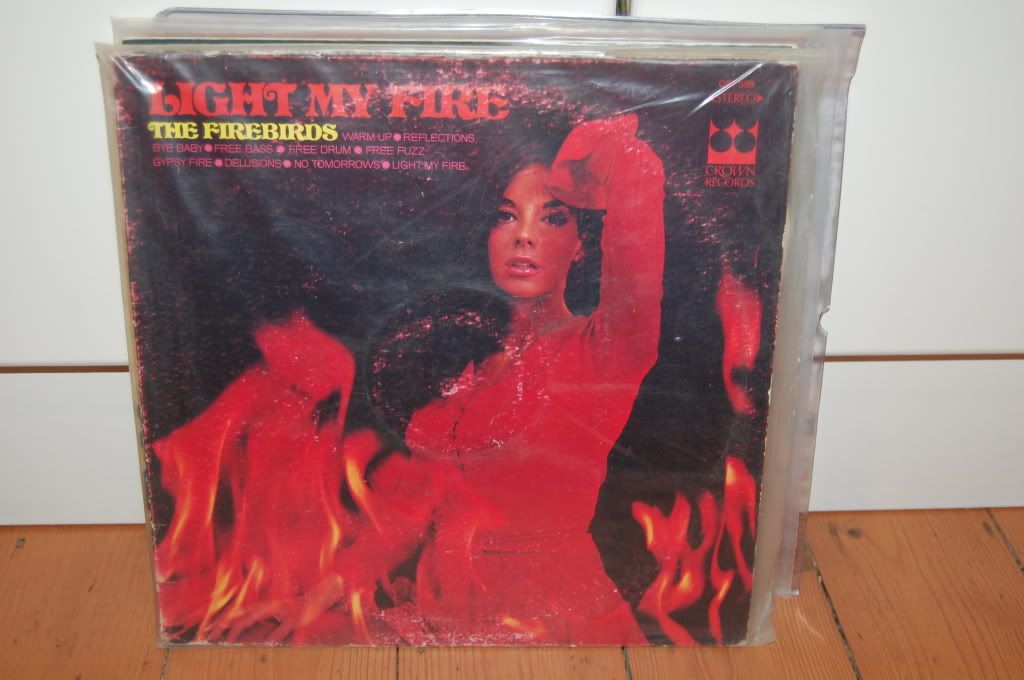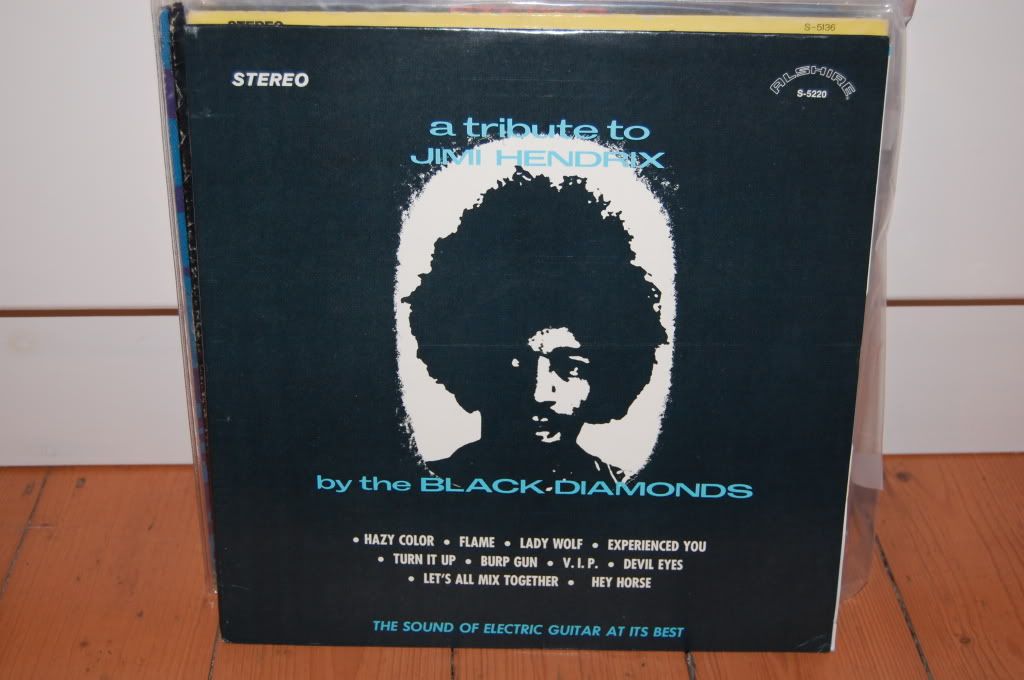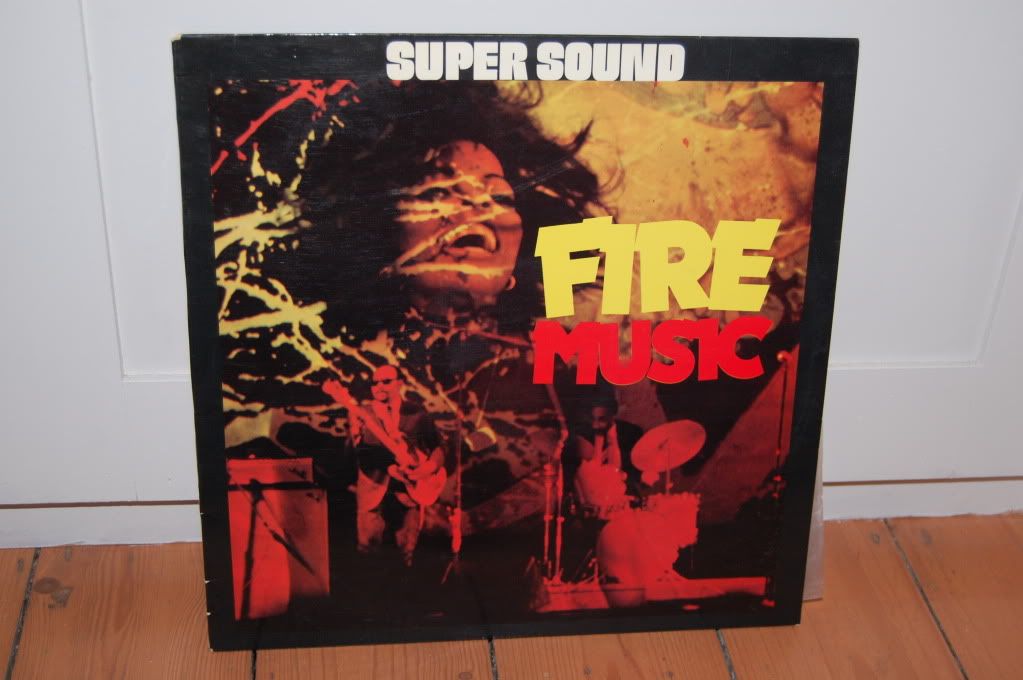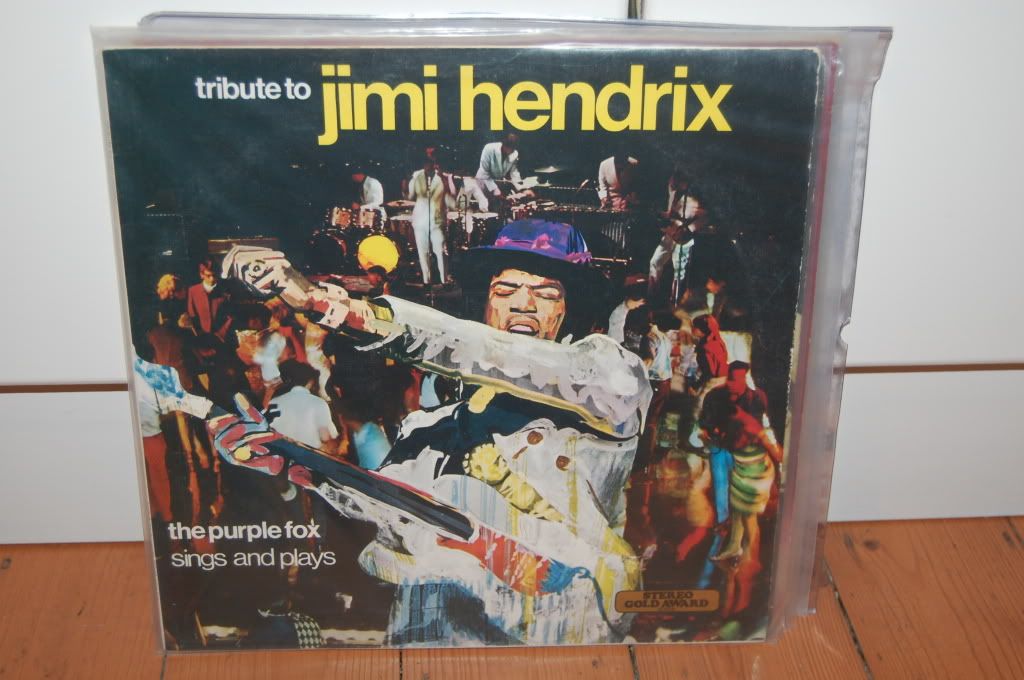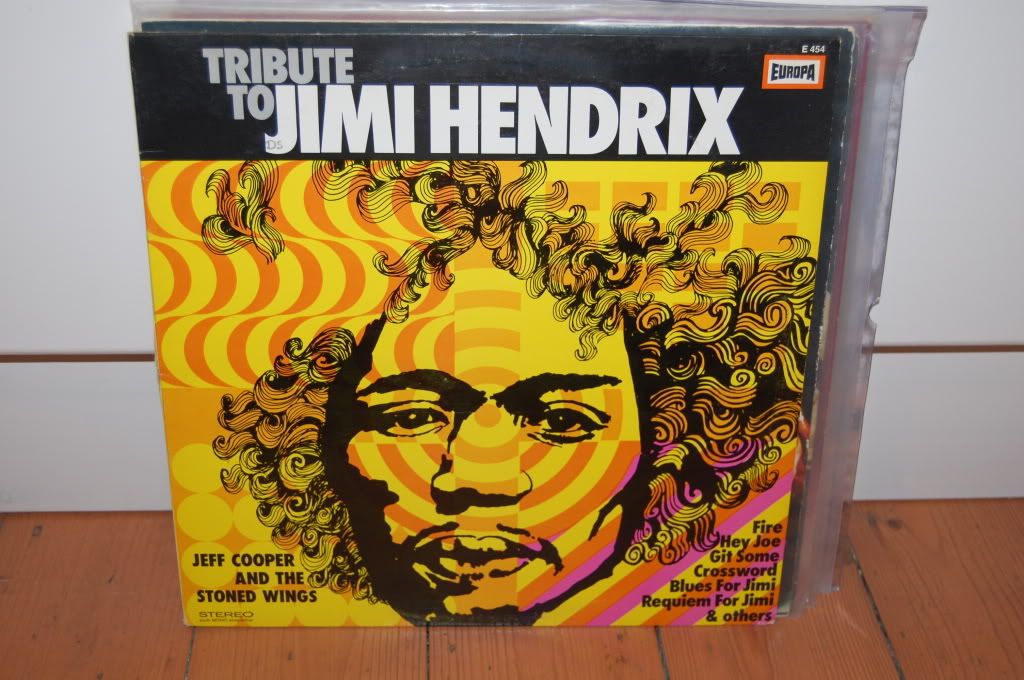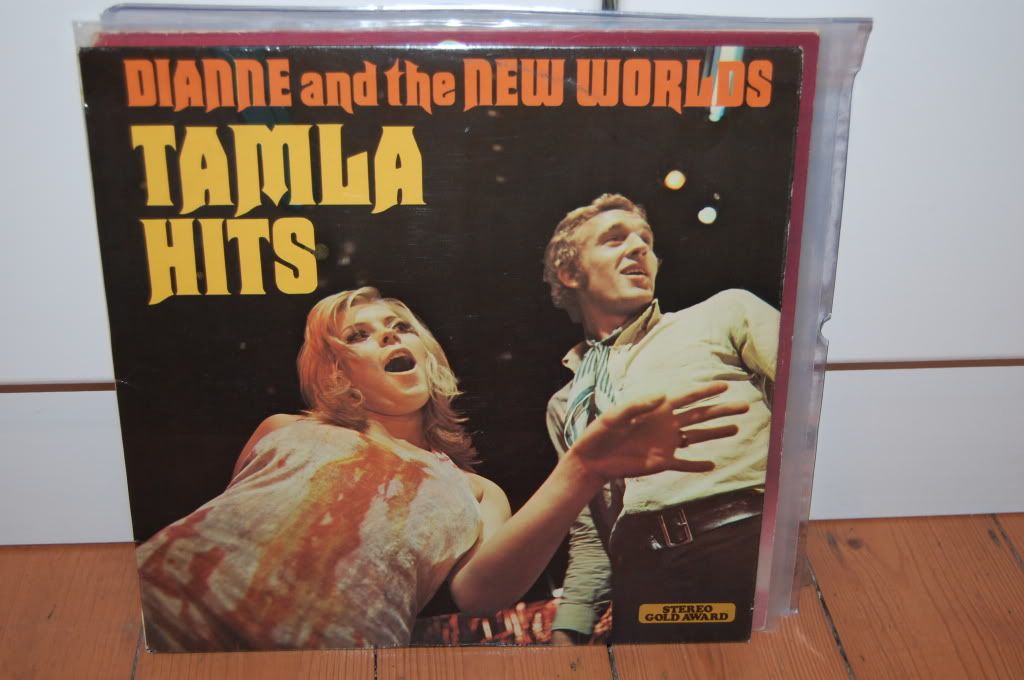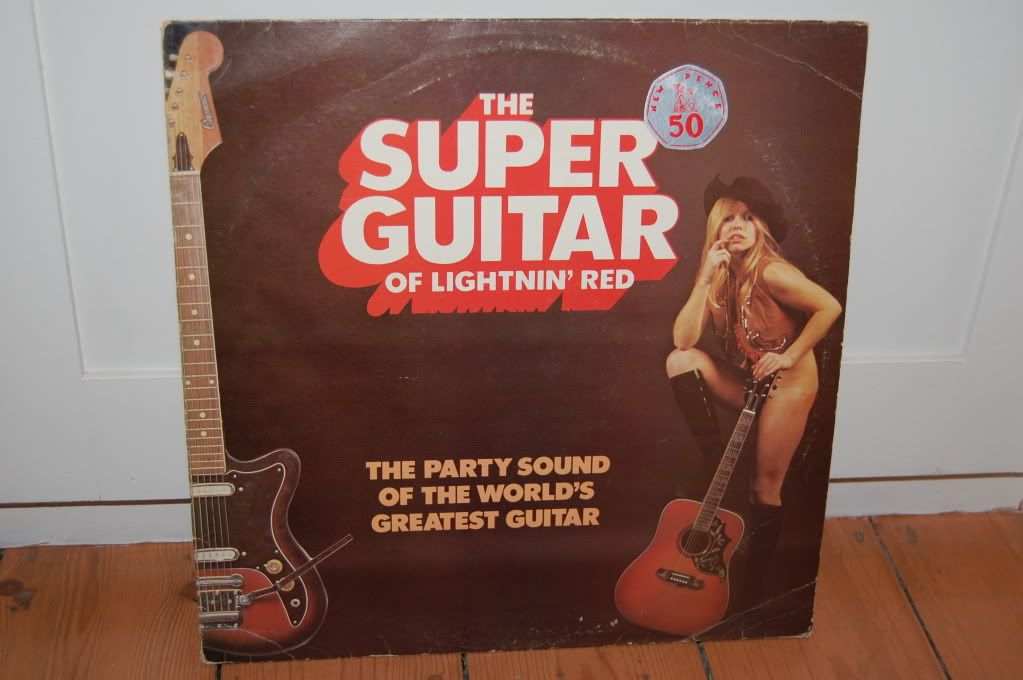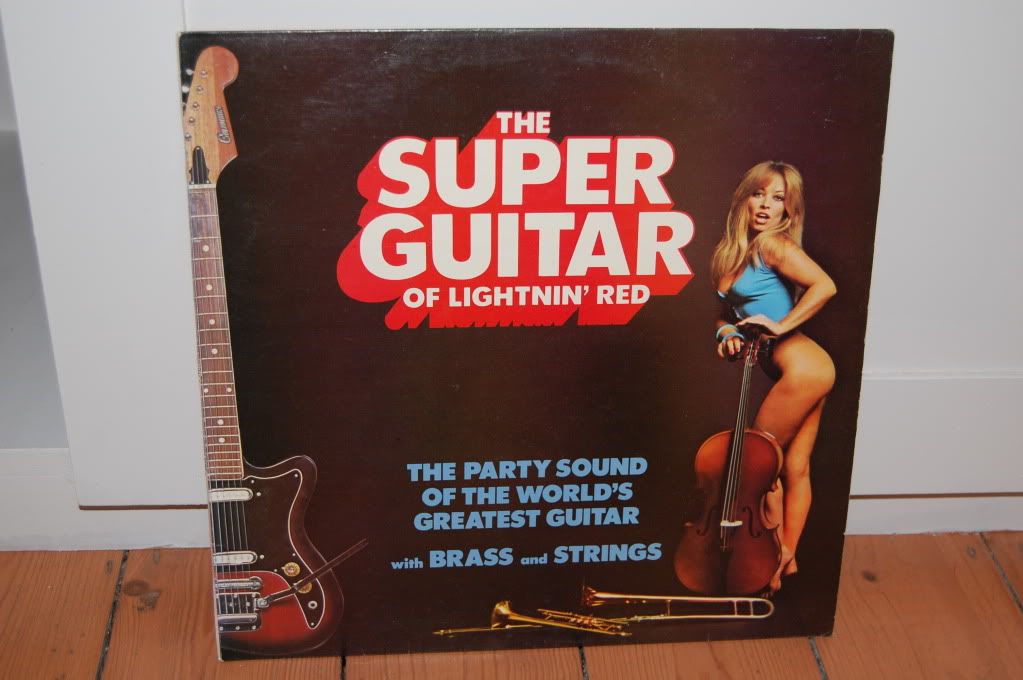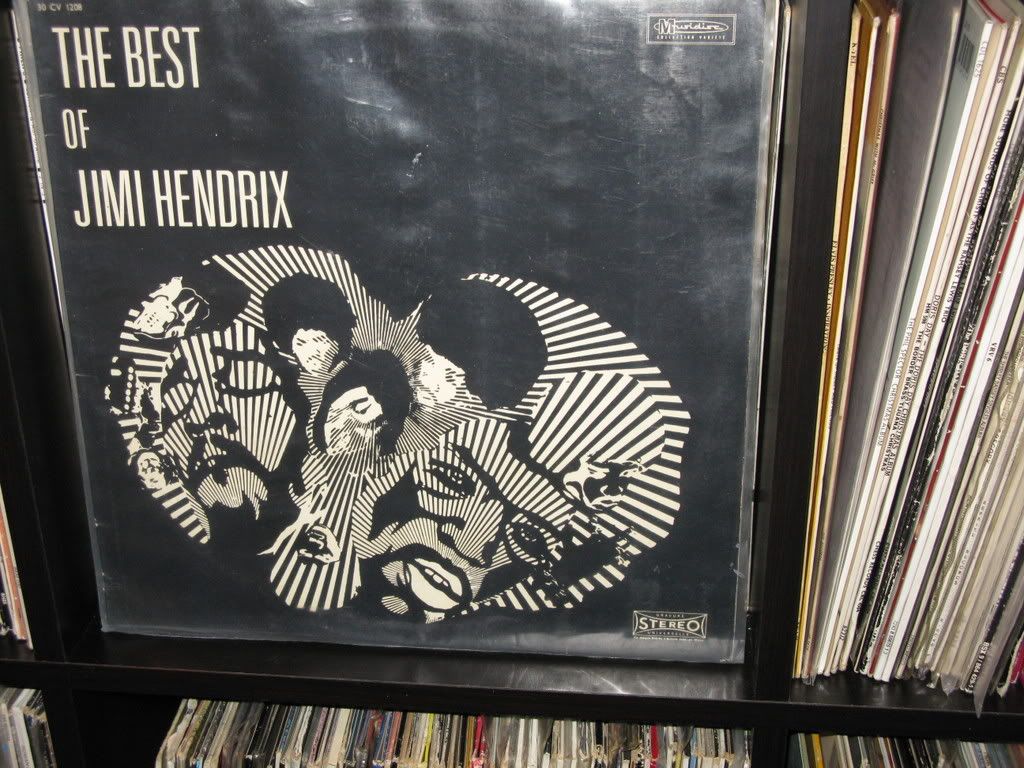Knowledge of electricity stretches back to at least 1600 and according to some sources as far back as ancient Greece.
By the end of the sixties there was nothing new about electricity. It did not represent the cutting edge of technology, or a science fiction future. In fact it was pretty mundane in the US and Europe.
So how to explain the slew of 'electricy' records put out by exploito kings Crown?
Within a few years 'bands' such as the Underground Electrics, The Electric Underground, Lee Akers and the Electric Generation and the Electric Firebirds, not to mention T Swift and the Electric Bag (already discussed in another post), were all unleashed on an unsuspecting gullible record buying public.
The obvious thought it that the word electric was supposed to make record buyers think of electric guitars and thereby making them think that they were buying some fuzzed out, scuzzed out, deep down and dirty masterpiece.
Of course the electric guitar was not a recent invention and its use in pop music, not to mention jazz, rock and roll, surf, country and western and soul, was old hat. But why let that stop you!
Hey Jude by the Underground Electrics starts badly and gets a whole lot worse!
Seemingly the work of a group of musicians struggling to master their instruments as they are being taped, the Underground Electrics would have been thrown out of any self respecting bar for sounding too weak.
They are not helped by the recording which gives every impression that they are in a lead lined barn. Songs stop suddenly, drum mistakes are retained, fade in and outs are sloppy by any but the most generous of standards.
Everything sounds like a first take, frequently of songs that no one in the band has played before.
The mixing favours the drums over the guitar which might not be so back if the drummer could have kept time. There is a bass in there somewhere but you have to really strain to hear it.
As for the singer, he gets to be placed at the front of the mix which makes his every bum note excruciating. Album opener Hey Jude showcases his peculiar song killing abilities to devastating effect. The good news is that if you can get through it the rest of the record's blues-by-numbers tracks are a better fit to his voice. But only just.
Without doubt the best thing about this record is the psychedelic yoga miss on the cover.
Things have GOT to get better!
Heavy Heavy Heavy by the Lee Akers and the Electric Generation begins promisingly with And When I Die. While not 'heavy' its a fun romp combining blues and country elements. I quite like it to be honest!
Having amused with the bar-room world weary And When I Die, Lee keeps up the pace with All I Ever Tried to Do Is Try. Unfortunately his voice starts to go a bit on the higher notes and he's now heading further into some obvious country territory. Not a heavy song either.
What's this with An Evening in the Country? Lee starts to stretch out a bit and growls a little and ups the tempo. His Electric Generation band mate on guitar provides one of the worst solos committed to vinyl but there's a fun piano solo which comes out of nowhere so we'll give it a pass.
However, having pleased with An Evening in the Country Lee and his cohorts make the fatal mistake of repeating the song for the rest of the record. All of the subsequent tracks sounds the same and for any but the most ardent of Lee Akers acolytes that's nine songs too many.
After a while he begins to sound increasingly demented while his band sound increasingly like an incompetent country bar band. And I don't mean that as a compliment.
We move on to the Electric Underground the their Guitar Explosion.
Look at those crazy cats with their weird facial hair, psychedelic light show and sunglasses - cool man!
And dig the linear notes:-"Electric guitars of today are as far a cry from the guitars of yesteryear as the music that is played on them. Through a process of evolution, the guitar, traditionally a simple folk instrument, has been developed and updated to play the music of NOW; the music that is a true reflection of our present super-technological age. Controlled by buttons, knobs and whatever other device the player has added on his own, the electric guitar has gained a new versatility. Used by today's talented rock groups, the psychedelic sounds produced can be described as a truly 'mind-bending' experience. Presented here is a collection of music recorded by such a group. The titles themselves, THE ULTIMATE TRIP, UNDERGROUND FREAKOUT and AERIAL FLIPOUT give a clue to the rockin' good time you will have listening and dancing to this album."
I love the bit about guitars having buttons and knobs!
Sounds great doesn't it? Alas when the needle comes down you get some sax led rock and roll from the early sixties that is in no way psychedelic.
In fact its our old friend Jerry Cole but this time in an even earlier incarnation as Billy Boyd from about 1963!
Fun but unlikely to trip you out!
Love this lady's mod threads. Although we wouldn't get along well if she treated my records like that!!!!
Is this the same as the Electric Generation? No. Is it the same as the Underground Electrics? Nope. How about the Electric Underground? Could be!
In fact this is Jerry Cole again. That's right its another recycling of an old Cole record, in this case Guitars a Go Go. Two songs from that record did develop into Animated Egg tracks but in their
current form the guitar is very clean and almost polite, they still have a surf/instrumental feel to them.
Again the titles are great but intentionally 'psychedlic' - Woodstock Hour, Let's Make It, Live Cream, Heavy, Doors Time.
No need to do a double take. This is actually a completely different record but with the same sleeve. I'm still not happy about her slap dash way with records.
Bit of an odd one this. The Associated Soul Group, Top Hits of Today, put out on theContessa label its actually a gatefold! The inside contains adverts for other Contessa releases such as The Best of the Polynesians and Top Pop Hits of Today
The covers of Scarborough Fair and The Sound of Silence are as weak as all exploito vocals. And they've also included the cover of MacArthur Park by the Stone Canyon Group, so obviously someone liked it, and Up Up and Away from the Generation Gap.
But would you believe it, all of the other songs are Id/ Animated Egg tracks!
We' get Our Man Hendrix on the Projection Company LP, Are You Experienced from T Swift, Wild Times from the Stone Canyon Rock Group (amongst others) and Don't Think Twice (also known as I Love You I Do) also on the Stone Canyon record and Uh Uh Uh and I Can't Stand It are outakes from the Id LP.
Almost everything is taken from somewhere else. No wonder they had enough money left over for a gatefold! Great exploito stuff!
You've probably guessed already that the Firebirds have nothing to do with the Electric Firebirds - thankfully!
Not a repackaging of an earlier record, Crown obviously splashed out on some musicians. I don't think they spent overly much on them but they were lucky enough to get a band who, within their limitations, really knew what they were doing.
Go straight past the very average Door's cover that gives the record its name and the second track Delusions which is frankly dreadful and play track three, Reflections. Do you like heavy, fuzzy, stoner rock? In which case this record is for you. If you like Blue Cheer and Steppenwolf and the Stooges you will like this. Primitive and hard this is the kind of music that all the other 'electric' 'heavy' records above said they were but weren't.
There were obviously enough tracks in the can to put out two records. I haven't got the 31 Flavors - Hair but by all accounts its the same band doing the same thing.
Check out the YouTube clips below
By the end of the sixties there was nothing new about electricity. It did not represent the cutting edge of technology, or a science fiction future. In fact it was pretty mundane in the US and Europe.
So how to explain the slew of 'electricy' records put out by exploito kings Crown?
Within a few years 'bands' such as the Underground Electrics, The Electric Underground, Lee Akers and the Electric Generation and the Electric Firebirds, not to mention T Swift and the Electric Bag (already discussed in another post), were all unleashed on an unsuspecting gullible record buying public.
The obvious thought it that the word electric was supposed to make record buyers think of electric guitars and thereby making them think that they were buying some fuzzed out, scuzzed out, deep down and dirty masterpiece.
Of course the electric guitar was not a recent invention and its use in pop music, not to mention jazz, rock and roll, surf, country and western and soul, was old hat. But why let that stop you!
Hey Jude by the Underground Electrics starts badly and gets a whole lot worse!
Seemingly the work of a group of musicians struggling to master their instruments as they are being taped, the Underground Electrics would have been thrown out of any self respecting bar for sounding too weak.
They are not helped by the recording which gives every impression that they are in a lead lined barn. Songs stop suddenly, drum mistakes are retained, fade in and outs are sloppy by any but the most generous of standards.
Everything sounds like a first take, frequently of songs that no one in the band has played before.
The mixing favours the drums over the guitar which might not be so back if the drummer could have kept time. There is a bass in there somewhere but you have to really strain to hear it.
As for the singer, he gets to be placed at the front of the mix which makes his every bum note excruciating. Album opener Hey Jude showcases his peculiar song killing abilities to devastating effect. The good news is that if you can get through it the rest of the record's blues-by-numbers tracks are a better fit to his voice. But only just.
Without doubt the best thing about this record is the psychedelic yoga miss on the cover.
Things have GOT to get better!
Heavy Heavy Heavy by the Lee Akers and the Electric Generation begins promisingly with And When I Die. While not 'heavy' its a fun romp combining blues and country elements. I quite like it to be honest!
Having amused with the bar-room world weary And When I Die, Lee keeps up the pace with All I Ever Tried to Do Is Try. Unfortunately his voice starts to go a bit on the higher notes and he's now heading further into some obvious country territory. Not a heavy song either.
What's this with An Evening in the Country? Lee starts to stretch out a bit and growls a little and ups the tempo. His Electric Generation band mate on guitar provides one of the worst solos committed to vinyl but there's a fun piano solo which comes out of nowhere so we'll give it a pass.
However, having pleased with An Evening in the Country Lee and his cohorts make the fatal mistake of repeating the song for the rest of the record. All of the subsequent tracks sounds the same and for any but the most ardent of Lee Akers acolytes that's nine songs too many.
After a while he begins to sound increasingly demented while his band sound increasingly like an incompetent country bar band. And I don't mean that as a compliment.
We move on to the Electric Underground the their Guitar Explosion.
Look at those crazy cats with their weird facial hair, psychedelic light show and sunglasses - cool man!
And dig the linear notes:-"Electric guitars of today are as far a cry from the guitars of yesteryear as the music that is played on them. Through a process of evolution, the guitar, traditionally a simple folk instrument, has been developed and updated to play the music of NOW; the music that is a true reflection of our present super-technological age. Controlled by buttons, knobs and whatever other device the player has added on his own, the electric guitar has gained a new versatility. Used by today's talented rock groups, the psychedelic sounds produced can be described as a truly 'mind-bending' experience. Presented here is a collection of music recorded by such a group. The titles themselves, THE ULTIMATE TRIP, UNDERGROUND FREAKOUT and AERIAL FLIPOUT give a clue to the rockin' good time you will have listening and dancing to this album."
I love the bit about guitars having buttons and knobs!
Sounds great doesn't it? Alas when the needle comes down you get some sax led rock and roll from the early sixties that is in no way psychedelic.
In fact its our old friend Jerry Cole but this time in an even earlier incarnation as Billy Boyd from about 1963!
Fun but unlikely to trip you out!
Love this lady's mod threads. Although we wouldn't get along well if she treated my records like that!!!!
Is this the same as the Electric Generation? No. Is it the same as the Underground Electrics? Nope. How about the Electric Underground? Could be!
In fact this is Jerry Cole again. That's right its another recycling of an old Cole record, in this case Guitars a Go Go. Two songs from that record did develop into Animated Egg tracks but in their
current form the guitar is very clean and almost polite, they still have a surf/instrumental feel to them.
Again the titles are great but intentionally 'psychedlic' - Woodstock Hour, Let's Make It, Live Cream, Heavy, Doors Time.
No need to do a double take. This is actually a completely different record but with the same sleeve. I'm still not happy about her slap dash way with records.
Bit of an odd one this. The Associated Soul Group, Top Hits of Today, put out on theContessa label its actually a gatefold! The inside contains adverts for other Contessa releases such as The Best of the Polynesians and Top Pop Hits of Today
The covers of Scarborough Fair and The Sound of Silence are as weak as all exploito vocals. And they've also included the cover of MacArthur Park by the Stone Canyon Group, so obviously someone liked it, and Up Up and Away from the Generation Gap.
But would you believe it, all of the other songs are Id/ Animated Egg tracks!
We' get Our Man Hendrix on the Projection Company LP, Are You Experienced from T Swift, Wild Times from the Stone Canyon Rock Group (amongst others) and Don't Think Twice (also known as I Love You I Do) also on the Stone Canyon record and Uh Uh Uh and I Can't Stand It are outakes from the Id LP.
Almost everything is taken from somewhere else. No wonder they had enough money left over for a gatefold! Great exploito stuff!
You've probably guessed already that the Firebirds have nothing to do with the Electric Firebirds - thankfully!
Not a repackaging of an earlier record, Crown obviously splashed out on some musicians. I don't think they spent overly much on them but they were lucky enough to get a band who, within their limitations, really knew what they were doing.
Go straight past the very average Door's cover that gives the record its name and the second track Delusions which is frankly dreadful and play track three, Reflections. Do you like heavy, fuzzy, stoner rock? In which case this record is for you. If you like Blue Cheer and Steppenwolf and the Stooges you will like this. Primitive and hard this is the kind of music that all the other 'electric' 'heavy' records above said they were but weren't.
There were obviously enough tracks in the can to put out two records. I haven't got the 31 Flavors - Hair but by all accounts its the same band doing the same thing.
Check out the YouTube clips below
